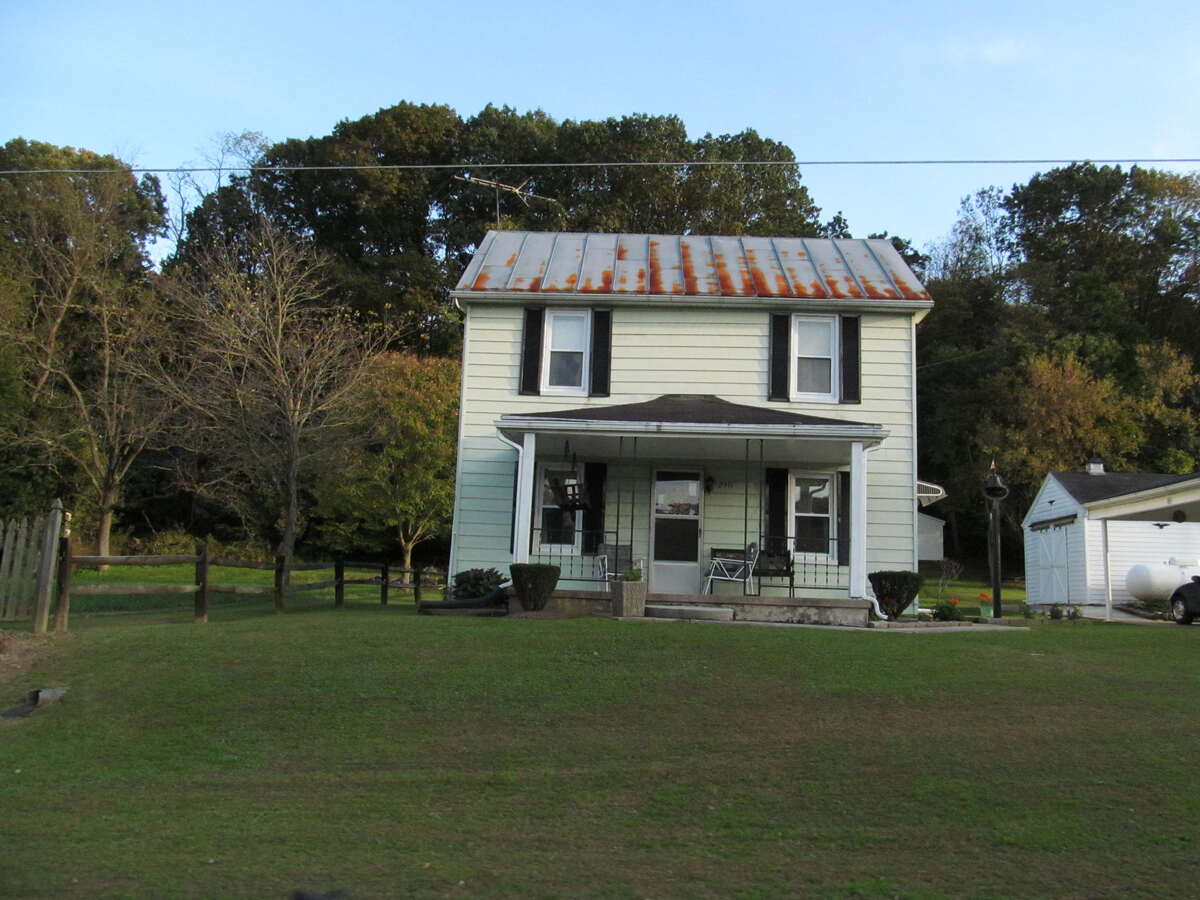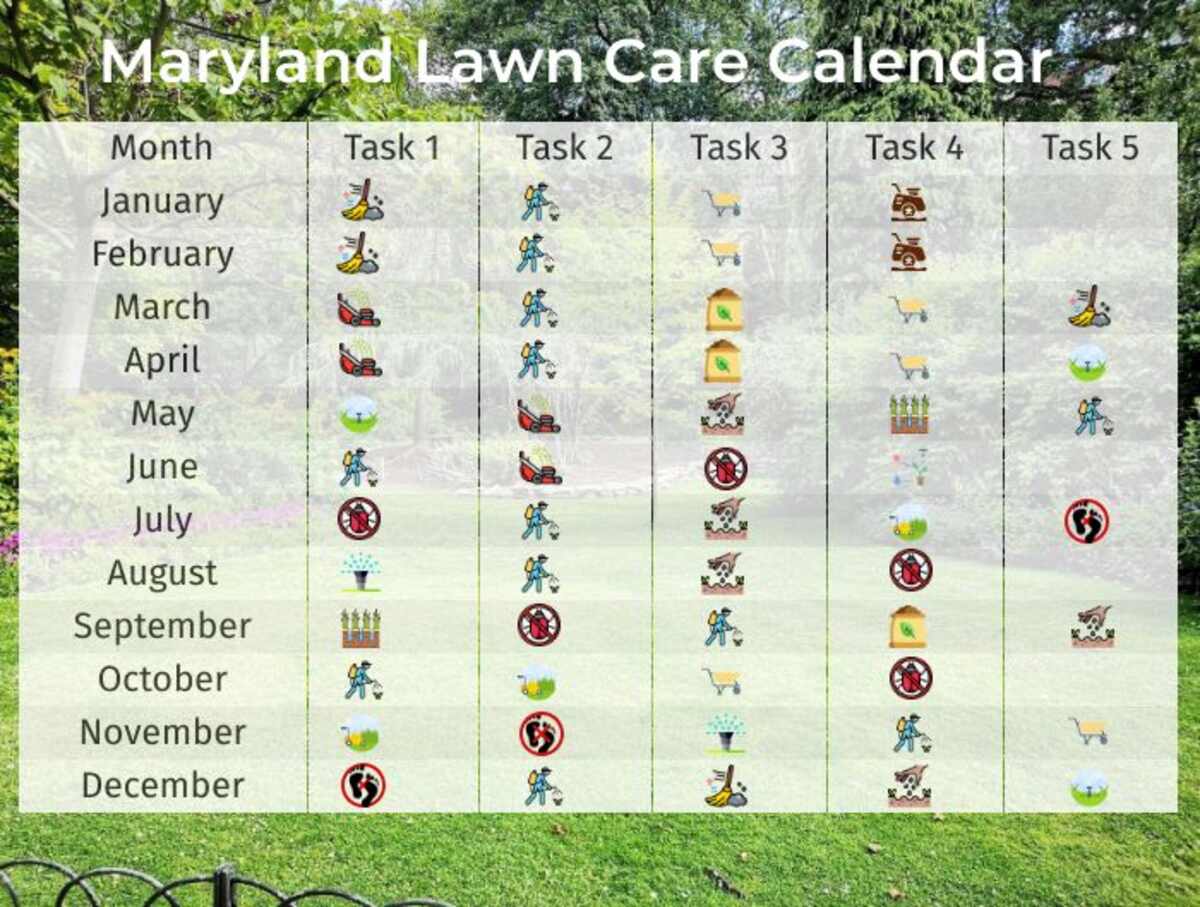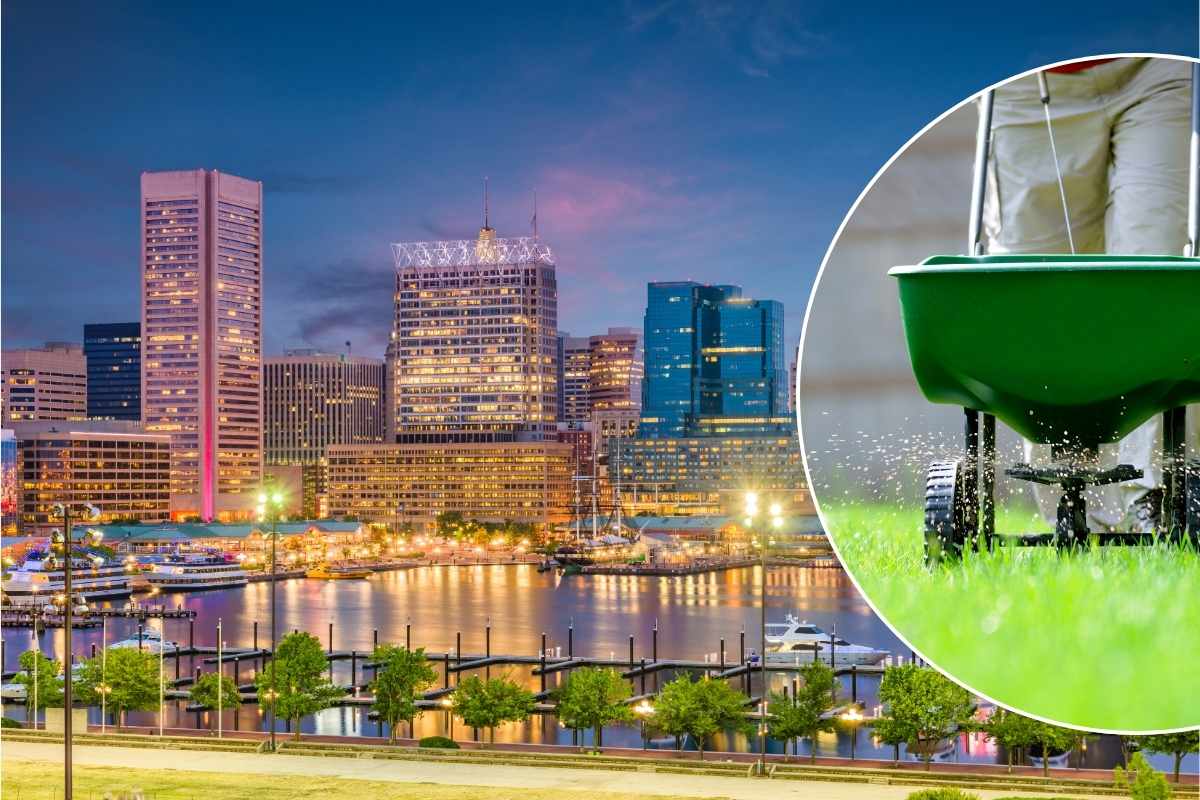
Maryland’s lawn fertilizer law took effect in 2013 to protect the Chesapeake Bay from fertilizer runoff from urban sources like golf courses, parks, and lawns. This runoff can cause algae blooms that rob the bay of sunlight and oxygen and threaten the balance of aquatic life.
So what is Maryland’s lawn fertilizer law? We’ll walk through it so you can achieve a great lawn while also staying on the right side of the law.
Fertilizer Restrictions
All homeowners are required to follow the University of Maryland’s fertilizer recommendations.
What Kind of Fertilizer Is Allowed in Maryland?
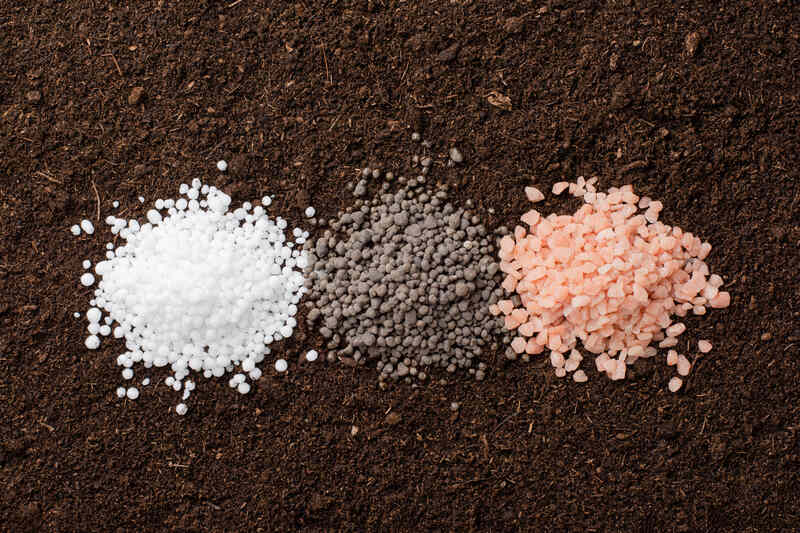
All bags of fertilizer are labeled with three numbers separated by dashes. Each number indicates the percentage of the following nutrients, always displayed in this order:
- Nitrogen (N): Promotes rapid growth and color
- Phosphorus (P): Encourages root growth
- Potassium (K): Makes your lawn durable and disease-resistant (see “What Does Potassium Do for Your Lawn?“)
In Maryland, all fertilizers must have a P rating of 0. However, there are exceptions. You may add phosphorus when your soil test results indicate a deficiency or when you are establishing or repairing your lawn.
How Much Fertilizer Can You Use?
Depending on solubility, a single fertilizer application can’t exceed 0.9 pounds of nitrogen per 1,000 square feet of lawn, and at least 20 percent of the nitrogen must be a slow-release formula.
When to Fertilize in Maryland
Maryland’s fertilizer lawn implemented blackout dates during the Bay State’s rainy season. You cannot apply fertilizer containing nitrogen or phosphorus from November 15 to March 1.
Other Regulations
Some important regulations included in Maryland’s fertilizer law are:
- You can’t use fertilizers to de-ice.
- Overspread fertilizer must be swept back onto lawns immediately.
- Do not apply fertilizer if heavy rain is forecasted or if the ground is frozen.
- Do not apply fertilizers within 15 feet of waterways or a body of water.
Lawn Fertilization Schedule for Maryland
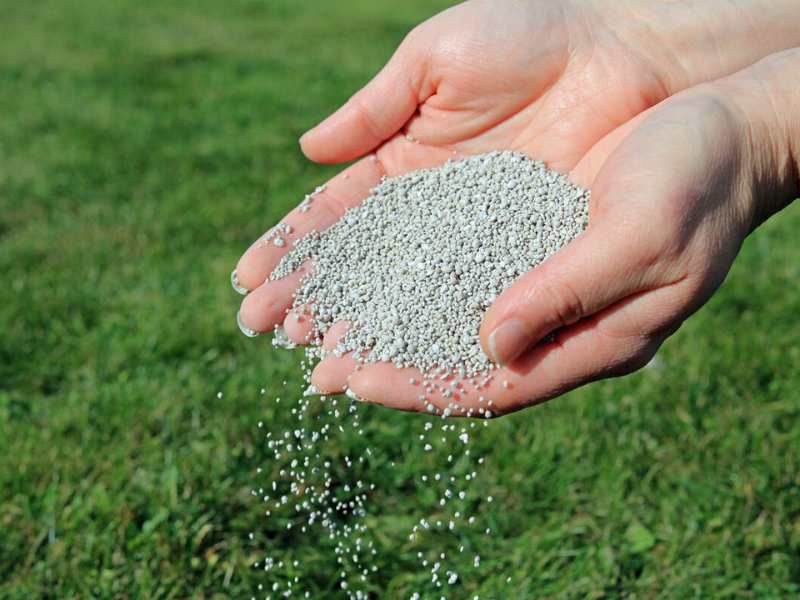
Depending on your location, both cool- and warm-season grasses grow in Maryland. In general, fertilize cool-season grasses in the spring and fall, but apply fertilizer to warm-season varieties in the spring and summer.
Cool-Season Grasses: Common varieties like tall fescue and Kentucky bluegrass require around 2.7 pounds of nitrogen annually, while fine fescue requires 1.4 pounds. Apply a round of fertilizer from May to early June, in September, and your last round from mid-October to November 15.
Warm-Season Grasses: Bermudagrass requires 2.7 pounds of nitrogen annually, and Zoysia has lower requirements at 1.8 pounds. Apply your first round of fertilizer from May to early June and your second from June to July.
If you want a schedule for other lawn care tasks, check out our Maryland lawn care calendar.
Homeowner Fertilization Requirements
Homeowners must obey the fertilizer restrictions, observe the blackout dates, and follow the University of Maryland’s recommendations for lawn fertilization. Additionally, verify that your lawn care professional is certified and licensed for fertilization by the Maryland Department of Agriculture.
Tips for a Healthy Lawn
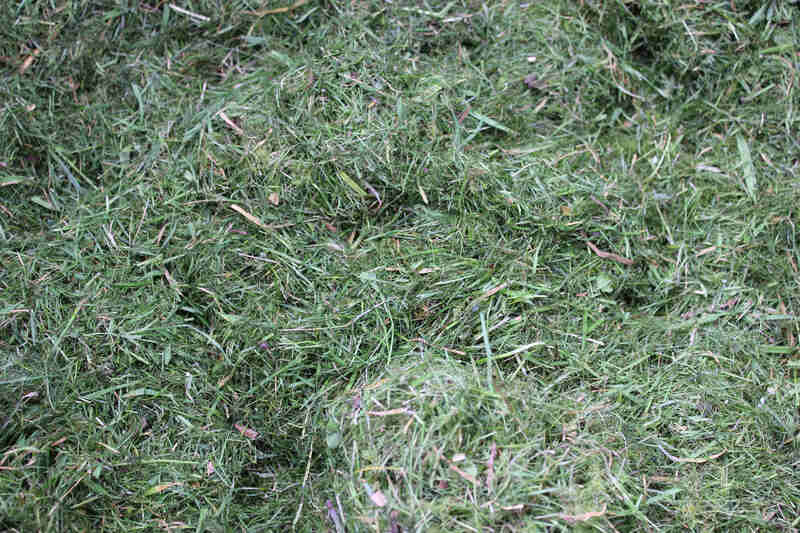
Fertilization is just one step in your lawn care routine. Here are some simple tips to maximize your efforts:
- Keep your grass taller to crowd weeks and conserve water.
- Sharpen your lawn mower blade in the spring.
- Cut no more than one-third of the grass each time you mow.
- Let established lawns go dormant during the summer.
- Leave grass clippings on the lawn for a nutrient boost.
FAQ
My city has a lawn fertilizer law. Which one do I follow?
Maryland’s state law supersedes any city or county laws.
Can I apply fertilizer by hand?
No. Always use a fertilizer spreader to be sure the granules are spread evenly
How much fertilizer should I buy?
A 45-pound bag of fertilizer covers 10,000 square feet. The average residential lawn in the U.S. is around 10,000 square feet, so you would need one bag of fertilizer.
What kinds of organic fertilizer should I use?
Common organic fertilizers in Maryland include alfalfa meal, Chilean nitrate, corn gluten, feather seed meal, and cotton meal.
Hiring a Professional
Maryland’s lawn fertilizer law protects the Bay from excess nutrients that cause harmful algae blooms. Everyone is responsible for upholding the law, including the pros. Take the guesswork out of lawn fertilization and let LawnStarter’s pros take over.
Main Image Credits:
Background: Sean Pavone / Canva Pro / License
Fertilizing Lawn: groveb / Canva Pro / License
